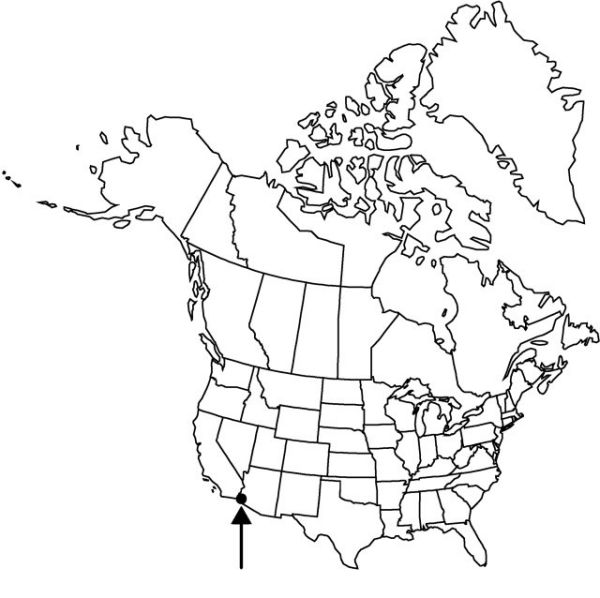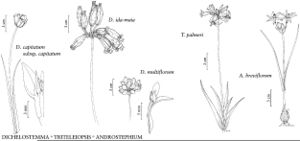Triteleiopsis palmeri
Amer. Midl. Naturalist 25: 99. 1941.
Corms straw-colored, 1–2 cm diam., young cormlets 3–6 mm, freely dividing within old corm coat and in leaf axils. Leaves 3–10, 15–30 cm × 3–20 mm wide at base. Flowers: perianth tube 9–10 mm, lobes 7–8 mm, alternating with transverse perianth appendages, having no apparent connection with stamens; filaments erect, adnate to perianth tube and forming internal ridges at tube base, terete, 5–7 mm, papillose, apex slender.
Phenology: Flowering spring.
Habitat: Deserts, sand dunes
Elevation: 100–1500 m
Distribution

Ariz., Mexico (Baja California, Sonora).
Discussion
Triteleiopsis palmeri flowers are similar to those of Triteleia, but differ in certain details of structure (anthers basifixed, papillate; presence of internal transverse perianth appendages; stigma not lobed) and especially in vegetative characters. The leaves, although keeled, are not channeled, and they are not basal but rather alternate and crowded at the base of the stem. The scape is stout (7–10 mm in diameter) compared to that of Triteleia (1–5 mm). The plants grow in loose, sandy soil. They are now in danger of extirpation in Arizona and thus the United States.
Selected References
None.
